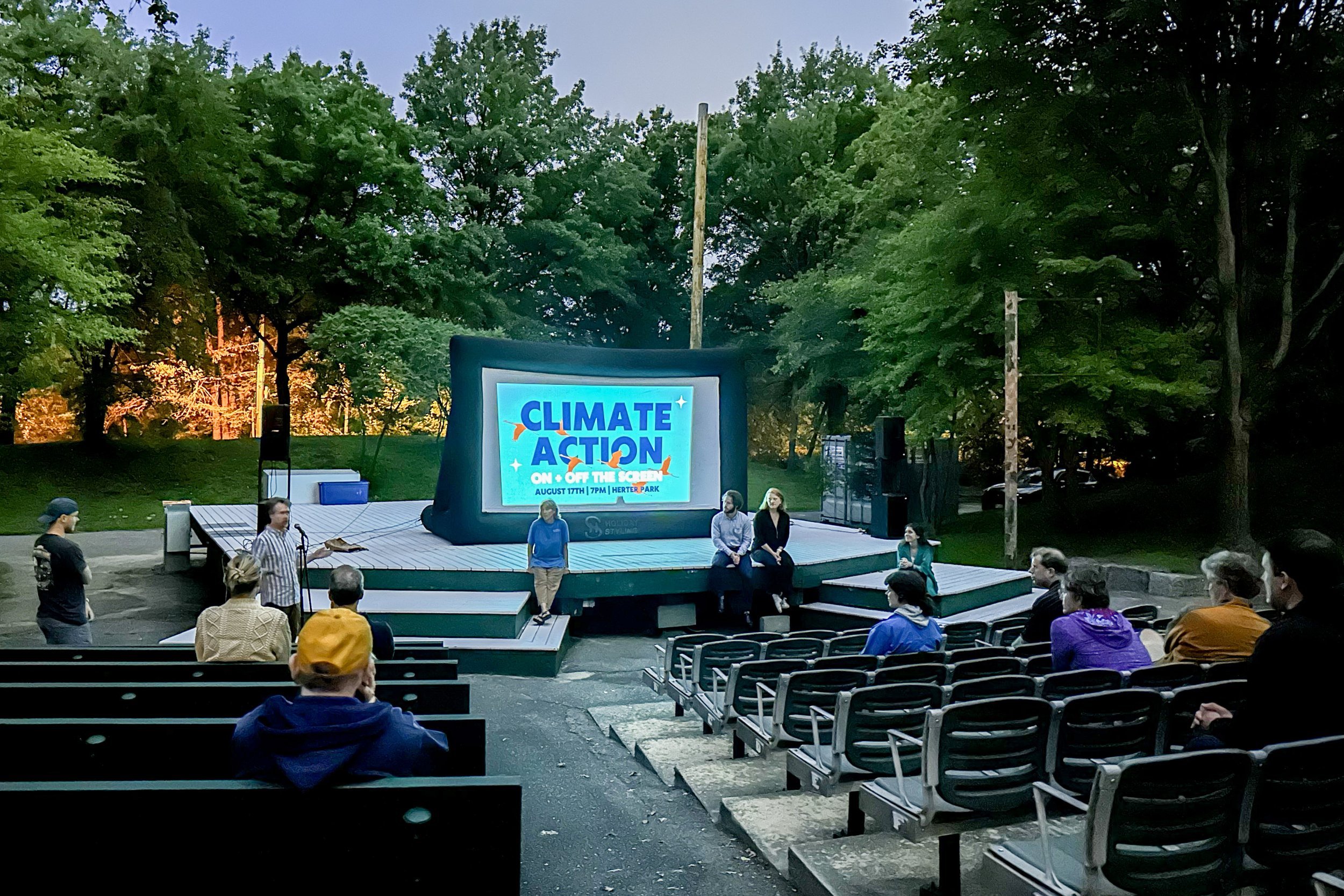RESILIENT ALLSTON
CRWA in Allston-Brighton
An urban riverfront neighborhood.
Allston, a vibrant neighborhood crisscrossed by I-90 and surrounded by the Charles River, is one of Boston’s most urban areas. It has one of the highest impervious cover percentages of any neighborhood in Boston. Nearby, Brighton shares its unique geography, and the two have long been considered one neighborhood.
Major development projects in these neighborhoods are changing the landscape.
These changes aren’t just about new buildings and roads—they’re a chance to tackle environmental injustices that have long affected the area. From reducing flood risks to enhancing access to green spaces and the river, these projects hold the potential to significantly improve community life.
What we are doing about it:
We’re taking action by championing community-driven, nature-based solutions to enhance climate resilience across Allston-Brighton through local advocacy and community engagement. Together, we can protect our neighborhoods from flooding, extreme heat, and other extreme weather by involving community members in decision-making, promoting green infrastructure, and enhancing access to natural spaces.
Resources for Residents
Advocating for effective stormwater management is crucial for protecting our communities and natural environments from harmful impacts of flooding and water pollution.
CRWA has long advocated for proper stormwater management, which not only reduces the risk of flood damage but also ensures cleaner rivers, lakes, and streams. Everyone has the power to make a difference, and it starts with being informed. Check out our Stormwater 101 Guide to understand the basics and learn how to advocate for climate resilience.
Advocacy in Allston-Brighton
Because of the neighborhood’s proximity to the Charles River and its high impervious cover percentage, it is critical that any redevelopment projects prioritize mitigation for extreme precipitation and extreme heat.
Charles River Watershed Association’s long history of advocacy in Allston-Brighton has consistently focused on large project reviews and planning for neighborhood stormwater retrofits.
If you plan to write your own comment letter, we encourage residents to review our past comments below and use them as advocacy points at community meetings or to submit for project processes.
Rain Barrel Giveaway
Every rainstorm picks up all the gasoline, trash, oil, pet waste, and more from our roads, parking lots, and roofs. Rainwater harvesting using rain barrels plays a crucial role in mitigating the harmful effects of stormwater runoff pollution on water bodies like the Charles River. By capturing rainwater from rooftops and directing it into barrels for later use, watershed residents can significantly reduce the volume of stormwater entering the local watershed.
Charles River Watershed Association is giving away free rain barrels to Allston-Brighton residents to keep the Charles River healthy! Registration is now closed.
OUR PRIORITIES & PROJECTS IN ALLSTON-BRIGHTON
-
The Boston neighborhood of North Allston lies inside a tight bend of the Charles River. This low-lying area was once tidal marshland, allowing rainwater to sink slowly into a mix of vegetation. Today, these marshlands are filled and covered with impervious surfaces that exacerbate stormwater runoff, local flooding, and urban heat island impacts.
In 2015, in partnership with the Boston Planning and Development Agency (BPDA), we conducted a sub-watershed planning study for North Allston, to identify places where green infrastructure practices such as bioretention basins, porous pavement, and tree trench systems could be constructed or expanded to provide sufficient stormwater treatment to meet the water quality goals of the Total Maximum Daily Load (TMDL) for Nutrients in the Lower Charles River Basin while also improving connectivity and circulation in the neighborhood, creating streets that are both safer and more appealing for pedestrians and bicyclists traveling between key destinations.
READ THE NORTH ALLSTON SUBWATERSHED PLAN>>
-
Given the high impervious cover in this section of Boston, the neighborhood has been subject to increased urban heat island effect and extensive street flooding.
Based on the current flooding conditions for Allston and the latest climate projections for the City of Boston, Coolidge Road was identified in YEAR as a prime candidate for green street retrofits due to its proximity to the Charles River. Being an important neighborhood connector, the street has wide intersections that can easily incorporate curb extensions with rain gardens and other green infrastructure strategies.
In 2019, CRWA, in collaboration with Nitsch Engineering and Boston Water and Sewer Commission, hosted community public meetings on concept designs for Coolidge Road.
SEE COOLIDGE RD FACT SHEET>>
-
Designated Christian A. Herter Park in 1974, this area of the Charles River Reservation was first developed as the Speedway in 1899. Located in the Brighton neighborhood of Boston, today, the 56-acre Herter Park is a riverfront respite from urban life, a critical ecosystem habitat, and an important green transportation connector.
The Massachusetts Department of Recreation and Conservation (DCR) owns Herter Park and envisions it as a dynamic and accessible four-season facility set in a rich and diverse riverine habitat. In 2021, DCR launched its Herter Park Master Plan public process and completed the master plan in late 2022.
As one of the few remaining riverfront parks in the lower basin of the Charles River, Charles River Watershed Association sees the Herter Park Master Plan as an opportunity to prioritize enhancing public access, restoring riverbanks, and implementing stormwater management practices to build climate resilience in Allston-Brighton.
READ OUR LATEST COMMENTS >>









